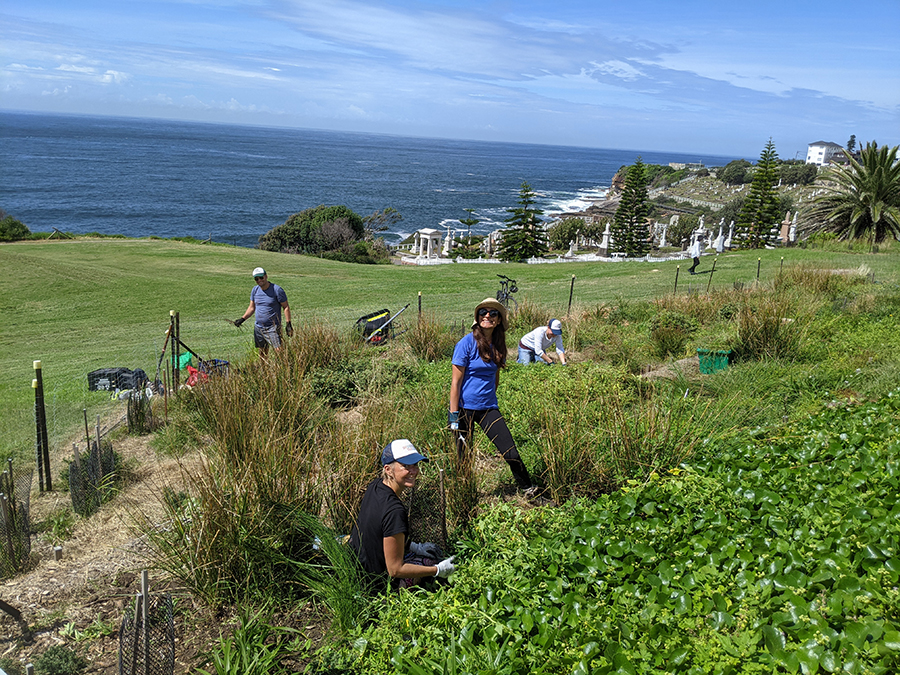- Home Home
-
Residents
Residents
- Waste & recycling Bins, clean-ups and disposing of tricky household items
- Parking Permits, car parks, maps and safety
- Your trees, plants & garden Tree pruning, native gardens and Living Connections
- Neighbourhood issues Report and resolve common issues
- Pets Dog and cat ownership, lost animals and off-leash parks
- Precinct committees Your local connection to Council
- Waverley LGA Maps Maps of the environment, planning zones and more
- Payments Pay for rates, certificates, permits and licences
-
Community
Community
- Children, youth & family services Early education, day care, support & resources
- Awards & grants Local Hero Awards, Garden Awards, Small Grants
- Get involved in your community Volunteering, creating connections, gardening
- Over 60s Services, activities, Mill Hill 60+ program
- Housing & homelessness Affordable housing, programs & support services
- Cultural diversity & inclusion Multiculturalism, language help, citizenship
- Aboriginal & Torres Strait Islander people Commitment to Reconciliation, plans & policies
- Disability inclusion Support services, access & inclusion projects
-
Business
Business
- Resources for Business Events, grants and support
- Innovation Roadmap 2025 to support business
- Tourism Home to Australia's most famous beach.
- Sponsorship Support local events
- Procurement Submitting tenders & expressions of interest to Council
- Commercial waste & recycling services Tailored waste services for business
- Mobile vending Waverley has limited mobile vending licenses
- Hello Bondi Council’s website to help visitors enjoy their stay
-
Recreation
Recreation
- Events Browse performances, exhibits and experiences
- Places of interest Historic buildings, markets, dining and Bondi Pavilion
- School Holiday Programs Fun-filled activities, workshops and events.
- Beaches & coast Beach information, safety, pool cleaning schedules
- Parks & reserves Location, public facilities and accessibility
- Arts & culture Artistic vision, creative programs, spaces and awards
- Venue & sport facilities hire Book indoor venues and sport facilities in Waverley
- Use of public spaces Events, commercial activations, filming etc
-
Environment
Environment
- Council leadership on environmental action Research, strategies and Council programs
- Climate resilience and reducing emissions Switch to electric, go solar and grants for apartments
- Water and the coast Keep beaches clean, save water and enjoy the sea
- Towards zero waste Reduce waste at home and at work
- Public tree management & urban greening Street Tree Masterplan and planting zones
- Native vegetation and animal habitat Join Bushcare and enjoy Waverley’s natural spaces
- Transport Council policy, bike and car share, electric vehicles
- Second Nature Council’s environmental news and events hub
-
Planning & Development
Planning & Development
- Development Applications The DA process, key documents & community consultation
- DA Tracking Tool Search a Development Application by number or date
- Application forms & certificates incl Planning, Rating, Construction and Occupation
- Waverley Local Planning Panel (WLPP) DA determination panel
- Compliance and regulations incl fire safety, food, pools and pollution
- Heritage incl Heritage Conservation Areas and fact sheets
- Urban planning and design Making Waverley a great place to live and work
- Major projects Council-delivered buildings, streets and parks
-
Council
Council
- Organisation structure Four directorates serve the community
- Mayor & councillors Your Mayor, Councillors, wards and contact details
- Council & committee meetings Dates, agendas and minutes of meetings of Council
- Advisory committees Advisory Committees of Council
- Policies, plans, strategies and reports Council's vision and delivery
- Jobs Current vacancies and working at Waverley
- Access to information Gaining access to publicly available information
- Payments Pay for rates, certificates, permits and licences
- Home
- >
- Environment
- >
- Native vegetation and animal habitat
- >
- Waverley’s remnant vegetation
- Council leadership on environmental action
- Climate resilience and reducing emissions
- Water and the coast
- Towards zero waste
- Public tree management & urban greening
- Native vegetation and animal habitat
- Transport
- Second Nature
Waverley’s remnant vegetation
Waverley Council’s Environmental Action Plan aims to not only ensure the six hectares of remnant vegetation is safeguarded, but the health of those areas is improved. Building climate resilience and safeguarding local species will require habitat areas to extend well beyond remnant vegetation and public land, with the target to have 1000 habitat gardens on private land by 2030, and to grow the coverage of canopy trees and ground cover to 35% by 2032.
Remnant vegetation on public land
Remnant vegetation refers to areas that have escaped development and disturbance and is defined as the “the original (pre-1788) vegetation which has survived to this day” (Waverley Flora Survey Report 2020). The fragmented nature of the remnants makes them less resilient to the urban pressures within the Waverley LGA.
Many of the remnants exist as small patches within the urban landscape. Small patches of native vegetation are more vulnerable to ‘edge effects’ and encroachment of weeds. If remnant and restored native vegetation are not managed it is likely they will be lost.
The remnant vegetation of the Waverley Council LGA is significantly fragmented and exists mostly along cliff lines, and within Council parks and reserves (use the interactive Environment map to see the areas). These small pockets of remnant vegetation, are mostly coastal heath, grasslands and sedgelands .
Council’s Biodiversity Action Plan: Remnant Sites 2022-2031 gives a detailed overview of preservation action.
In some of our well-known natural areas, the original vegetation has been removed. Council has detailed plans to protect and restore these areas:
- Thomas Hogan Reserve Ecological Restoration Action Plan 2018
- Bronte Gully Ecological Restoration Action Plan 2015-2045
- Tamarama Park Ecological Restoration Action Plan 2010
Habitat gardens on private property
Waverley Council is densely populated, with 7,635 persons per square km. Gardens on private land are crucial to providing habitat connectivity, acting as natural bridges for native animals moving around the area. Residents are encouraged to grow their own habitat gardens:
- Explore Council’s resources on starting a native garden, including the Living Connections program which supplies free plants. Apartment balconies can still work as native gardens!
- For inspiration on what native trees would work best in your garden, explore the preferred tree species for your zone in the Street Master Plan.
- For information on community gardens, including verge gardens, visit the Community section.



